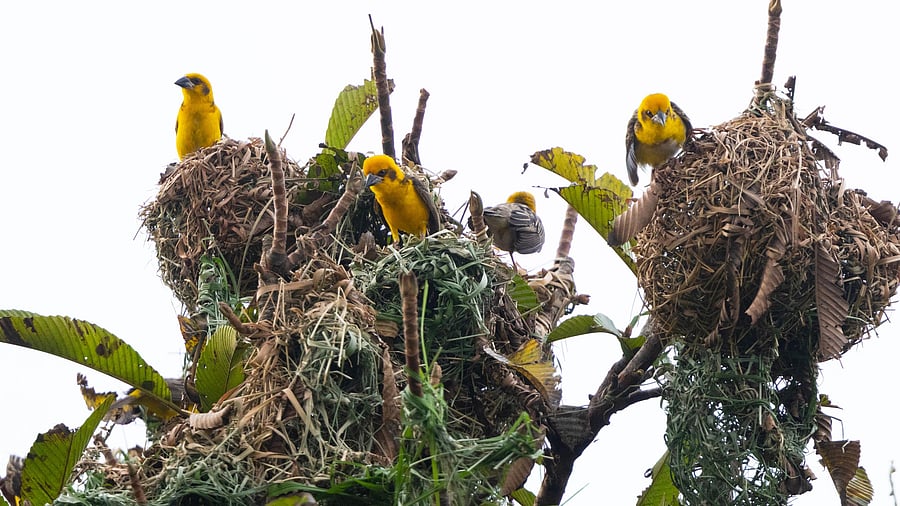
Finn's Weaver colony in Kaziranga.
Credit: Kaziranga National Park, Assam
Guwahati: The first ever grassland birds census in Assam's Kaziranga National Park and Tiger Reserve (KNPTR) in Assam identified 43 species, most of which are under threat in other major bird habitats in the country due to habitat loss and fragmentation.
The survey, according to the director of the park, Sonali Ghosh, put Kaziranga, an UNESCO heritage site, among the protected areas having highest diversity of grassland birds in the country.
Conducted across 185 grassland points within KNPTR between March 18 and May 25, the census identified one crititically endangered species, two endangered, six vulnerable and one species in near threatened category.
"Habitat analysis revealed that these birds occupy a variety of grassland ecosystems, with tall, wet grasslands supporting the highest number of species, including many that are threatened. Other common habitats included tall grasslands, short grass/open fields, and scrub grasslands. The findings indicates excellent health of Kaziranga's grasslands, its ecology and the habitats for the wildlife species that thrieve here," Ghosh told DH, on Monday.
Ghosh said grassland habitats in Maharashtra, Gujarat, and West Bengal are among the richest in terms of grassland bird diversity in India. But grassland species are under threat due to habitat loss and fragmentation, making these areas critical for conservation efforts. "The ones in Kaziranga are entirely dependent on flood plain Brahmaputra grasslands."
Winged attractions:
An attractive finding of the survey in Kaziranga was documentation of a breeding colony of the endangered Finn’s Weaver (Ploceus megarhynchus), locally called tukura sorai. "This remarkable bird (a LIFER for many birdwatchers), a master nest-builder atop trees, is a vital indicator of grassland health. These species serve as ecological indicators of the health and integrity of floodplain grasslands," Ghosh said.
The survey placed emphasis on ten focal species that are either globally threatened or endemic to the Brahmaputra floodplains: Bengal Florican, Swamp Francolin, Finn’s Weaver, Swamp Grass Babbler, Jerdon’s Babbler, Slender-billed Babbler, Black-breasted Parrotbill, Marsh Babbler, Bristled Grassbird, and Indian Grassbird.
Kaziranga is the largest home for the prized one-horned rhinos and pulls lakhs tourists every year. Royal Bengal tiger, Asian elephants, swamp deer, water buffalo and large species of birds are the other major attractions.